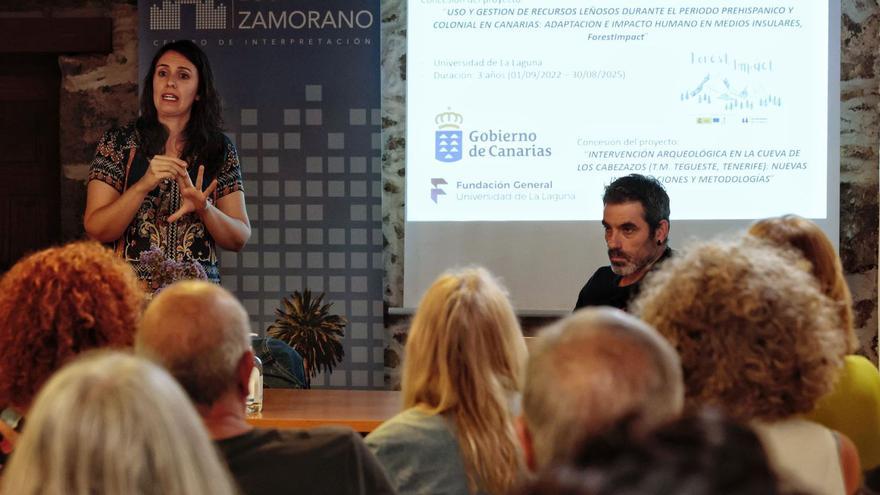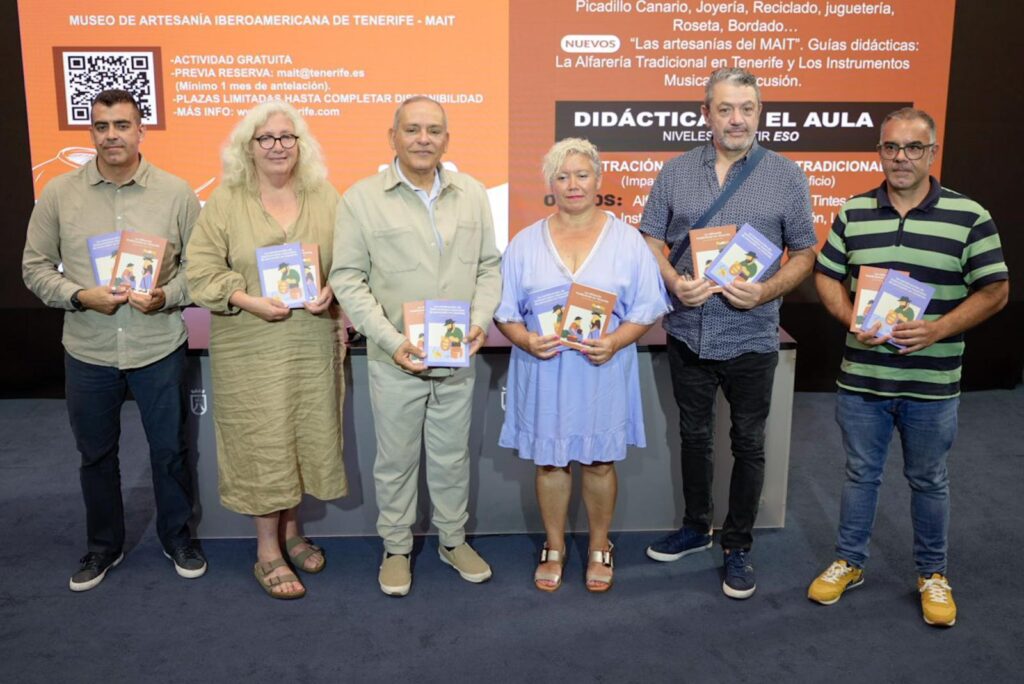
Paloma Vidal and Salvador Pardo announced a few days ago the steps that they and their team have taken in the Cueva de Los Cabezazos, “an absolutely reference site.” Accompanied by students from the History Degree of the University of La Laguna, they have obtained numerous remains that they will have to analyze from now on. A new excavation campaign will begin in July.
Los Cabezazos cave, in Tegueste, continues to be a source of finds to recreate the Guanche past. Up to 831 fragments of the first settlers of the Island have been collected by the team that has been working in the area. These are performances co-directed by Paloma Vidal and Salvador Pardo, who gave a talk at the Casa de Los Zamorano on Thursday. “It is a reference site,” Vidal stressed from the beginning of the conference.
The Cueva de Los Cabezazos (Tegueste): new readings for a reference archaeological site is the title of an exhibition on an archaeological space that is not the first time it has been excavated. “It is a highly studied area since the 19th century,” detailed those responsible for the action, and referred to the work of Luis Diego Cuscoy, from the Museum of Nature and Archeology and Cultania.
Vidal and Pardo have not been alone. They have been accompanied by students from the History Degree of the University of La Laguna, which will be added to the campaign that will begin next month. After the actions carried out, they already have some data, still an outline. However, the ultimate goal is still to be built: a “paleoenvironmental sequence that is as complete as possible,” they noted.
The specialists showed at the conference images resulting from the three-dimensional registration made in the cavity. As detailed by Salvador Pardo, the cave was mapped with a laser. They have opted for a paperless technology and have been able to make some recreations. Specifically, in the April campaign of this year, they collected 352 lithic remains and 831 fragments. They were also fortunate enough to find what they call a “glass”, in which various remains were found.
What has been recovered? Charcoal, seeds, ichthyofauna, malacofauna remains, zooarchaeological pieces… They have deposited the material in boxes and have carried out a general inventory, while later they will have to study the material at the University of La Laguna. For its part, the next campaign will begin in mid-July, in which it is intended to expand the extension of the excavation.
visits to the cave
“The first protector of heritage is the neighbor,” said Pardo. For this reason, next Saturday, June 22, they will receive small groups in the cave to explain what they have been doing, the specialists also indicated during the talk, which was joined by several dozen people.
«I hope that this is repeated in the coming years and that Tegueste ends up becoming a benchmark for the archaeological heritage of Canary Islands», expressed the acting councilor for Local Development of the Tegueste City Council, Antonio Manuel Martín, who was also present at the event. “This field is generating more and more interest,” said the mayor, who pointed out that these actions contribute to the dissemination of the resources available in the municipality.
















